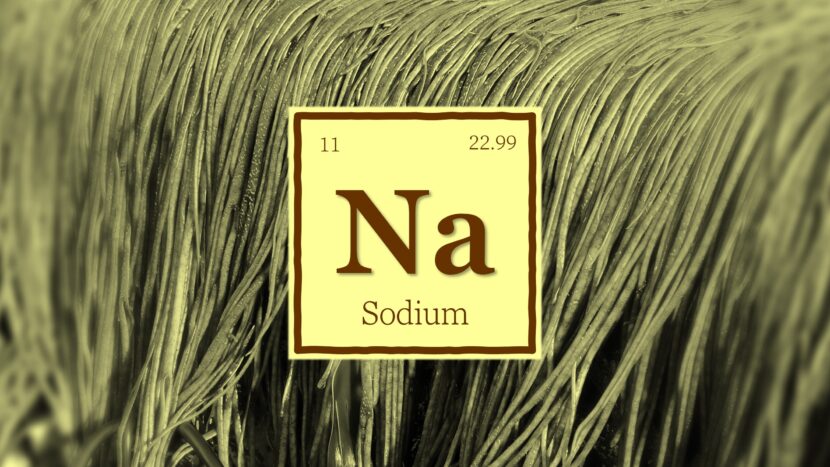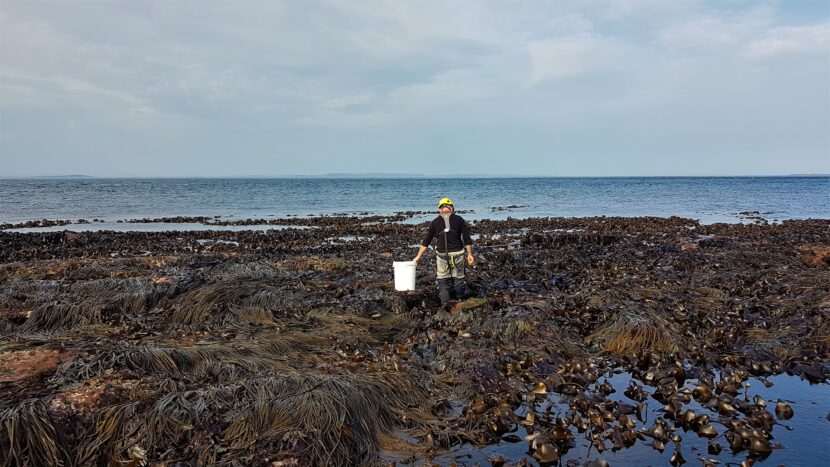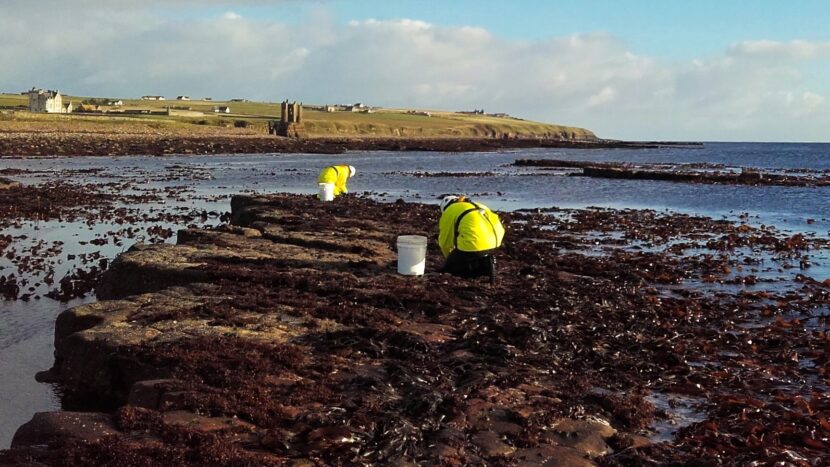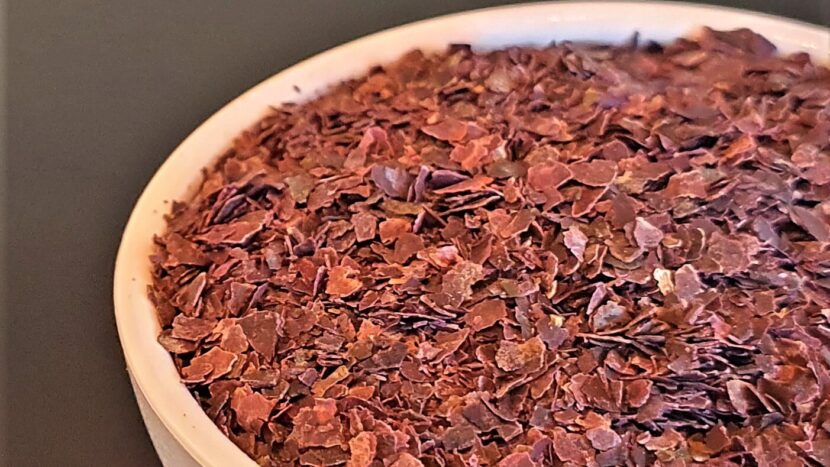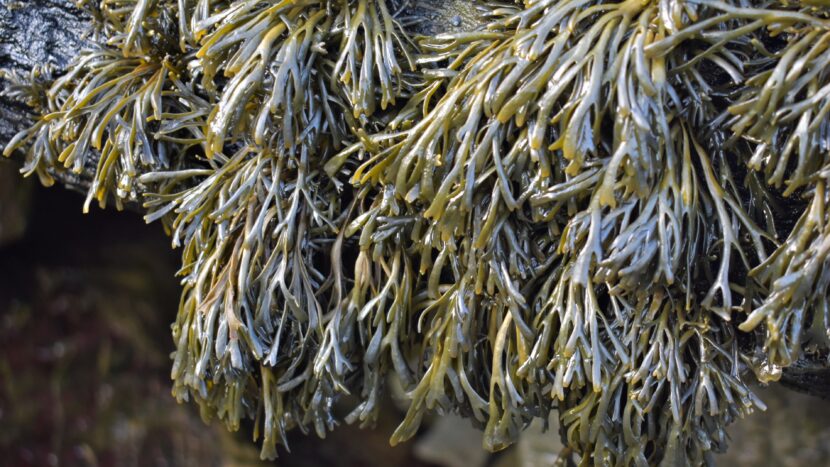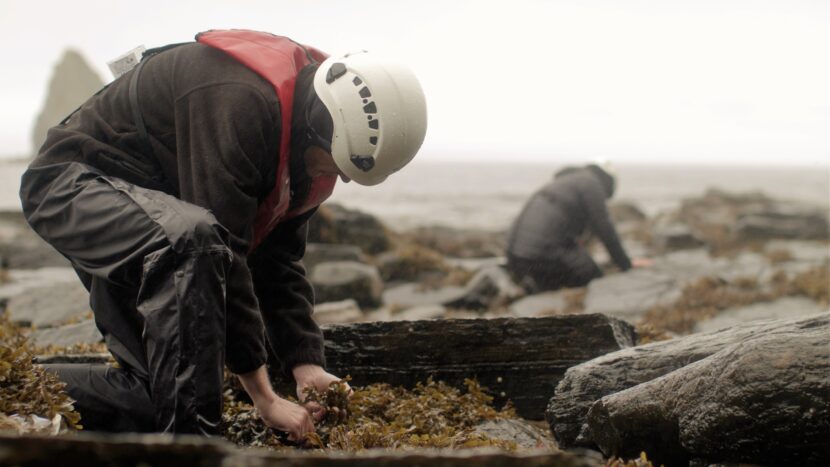Iodine from seaweed for thyroid health

Iodine is an essential nutrient to maintain good health as it is a key component of certain thyroid hormones. All seaweed is high in iodine, which means only a little is required to achieve recommended intake levels. Conversely, excessive consumption of seaweed could result in elevated iodine intake, which carries health concerns. In this article – co-authored by Hugh Coulson, and Peter Elbourne – we provide some background to iodine and thyroid health, together with explanation of iodine content in different seaweeds, natural variability and recommendations.
The importance of the thyroid
Before we take a deeper dive into the benefits of seaweed for thyroid health, let's first understand the role of the thyroid gland in our body. The thyroid is a butterfly-shaped organ located in the neck, just below the layrnx. It produces hormones that have wide ranging effects, including metabolism, appetite control, gut absorption, blood flow, menstruation and even sexual function. Importantly, thyroid hormones are crucial for brain development in the fetus and growth in young people. If the thyroid gland is not functioning properly, it will have knock on health issues related to hyperthyroidism (overactive thyroid) or, more commonly, hypothyroidism (underactive thyroid).
Thryoid hormones contain iodine
The two critical thyroid hormones both contain iodine. Thyroxine is often shortened to T4 because it contains four atoms of iodine. Triiodothryonine contains three iodine atoms and so is known as T3: this is the key thyroid hormone as it regulates the metabolic rate of body cells. Iodine is an essential mineral. Our bodies cannot make iodine and we need to consume it within our diet.
Health implications of iodine deficiency
The widespread, proven health impacts from iodine deficiency mean that it is a subject of international research. The significant role iodine plays in good health means that there are six approved health claims for this nutrient in Europe: metabolism, cognitive function, skin health, child development, nervous system and, of course, thyroid health. Negative impacts of iodine deficiency during pregnancy include low birth weight and increased infant mortality [1] and impaired cognition and reading skills [2]. One of the most visible symptoms of iodine deficiency is a goitre, where the thyroid becomes enlarged and forms a lump on the neck.
Where do we get iodine from?
Seafood is a source of iodine because the natural content in seawater is relatively high. Dietary intake is also connected to the trace levels of iodine salts in the soil where food is grown. Soil from coastal areas can have an elevated level of iodine due to maritime influences. Areas subject to high glaciation, precipitation or floods will generally have lower iodine levels in their soil. This is evident in mountainous areas of Europe, Asia and Africa, plus countries with large floodplains such as Bangladesh [3].
Switzerland is famous for snow-capped peaks, cheesy fondue and milk chocolate, but it also used to be renowned for goitres! Some traditional dress was designed to cover the neck. Just over 100 years ago, Swiss doctors carried out trials in a remote village near the Matterhorn where the majority of children had goitres and demonstrated that small doses of iodine had a clear beneficial effect [4]. Iodised salt – table salt with mineral iodine artificially added - was introduced to Switzerland soon after. Many countries followed this approach. Iodisation of salt is considered one of the most cost-effective public health measures according to experts. Different chemicals are used to iodise edible salt, including potassium iodate and sodium iodide. Traces of other chemicals may be added to help stabilise the iodine and prevent clumping. Sea salt contains negligible levels of iodine.
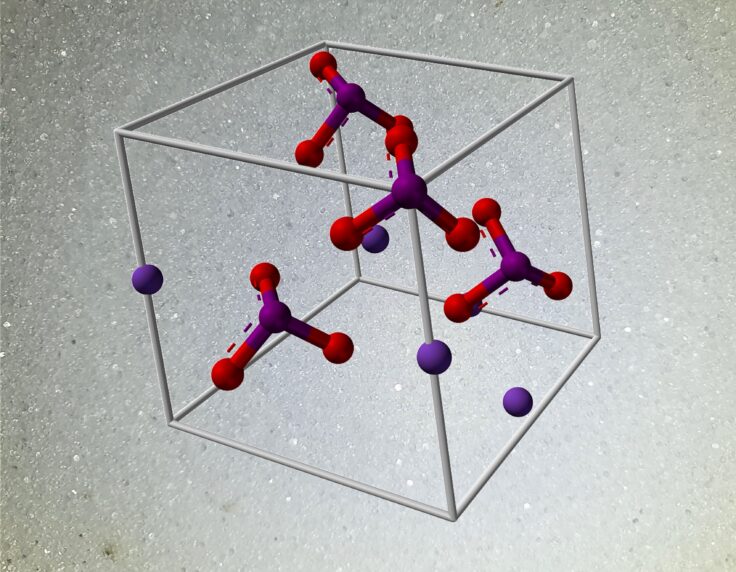
Potassium iodate is one of the most commonly used chemicals to artificially boost iodine levels in salt
Credit: CCoil, CC BY 3.0, via Wikimedia CommonsThyroid issues used to be widespread in the UK. Although affecting many inland hilly regions, a condition called Derbyshire Neck became well known even though nearby areas such as Yorkshire also had high iodine deficiency issues [5]. Over time, rural populations became less isolated and more affluent. This led to a more diverse diet, in contrast to just eating food produced in the low-iodine soil in any one region.

Adding flakes of dulse at low inclusion levels will help provide a boost of iodine
Is low iodine intake still an issue?
Our diets are generally more varied in the modern Western world, plus it is more likely that some people consume traces of iodine through iodised salt. This has helped average intake levels reach a level where the worst iodine deficiency conditions are largely consigned to history. Interestingly, milk and dairy products make a significant contribution to iodine intake in the UK. This is because of the artificial iodisation of feed for animal health and the use of iodine disinfectants during milking. Government campaigns to promote dairy consumption indirectly increased iodine intake, resulting in an ‘accidental public health triumph’ [6]. However, changing agricultural practices mean that iodine levels in dairy products have reduced in recent decades.
According to a review of global iodine status in 2011 [7], 1.9 billion people do not consume enough iodine, including 241 million school-age children. When considering iodine intake in a country or region, the average across the population can hide deficiencies in certain cohorts. For example, research in Ireland found low iodine status for women of child-bearing age [8]. There is evidence of a similar pattern in the UK [2], which is a concern for public health. The most recent National Diet and Nutrition Survey in the UK [9] found that one in six women tested between 16-49 years of age showed evidence of iodine deficiency, as defined by the World Health Organisation [10].
A report on iodine by the UK’s Scientific Advisory Committee on Nutrition in 2014 [3] highlighted the following groups as of particular risk regarding iodine deficiency:
- Teenage girls
- Women of child-bearing age
- Allergy sufferers who may have restricted diets
- Consumers avoiding dairy
- Consumers avoiding seafood
This means that anyone following a vegan diet is especially at risk of not sourcing enough iodine in their diet. More and more consumers are going vegan – 3% of the population in Europe are thought to be vegan [11] – and iodine is not always added to plant-based food and drink. Although table salt is fortified with iodine in many countries, this is not the case in the UK.
How much iodine do we need?
A key point to consider is how much iodine do we need to consume to maintain good health. Undoubtedly, requirements will vary between individuals. The NHS recommends a daily intake of 140ug (micrograms), but this has not been reviewed in many years. It is similar to the intake advised by the World Health Organisation [12], which more clearly distinguishes daily requirement as follows:
- 90ug for children under 6 years
- 120ug for children 6-12 years
- 150ug for anyone over 12 years
- 250ug for pregnant and breastfeeding women.
Failure to consume enough iodine could lead to hypothyroidism, where the thyroid gland does not produce enough hormones and various body functions slow. This results in a series of health issues, including tiredness, low mood, weight gain and dry skin. Unfortunately, many of these symptoms can be confused with other conditions and so tests are often needed for diagnosis of hypothyroidism.
How much iodine is too much?
Excessive iodine consumption may impact thyroid function. This can result in hyperthyroidism, with symptoms such as mood swings, heart palpitations and weight loss. Indeed, hypothyroidism is also a possibility if too much iodine is consumed. In summary, very low or very high iodine consumption risks disrupting normal hormone production by the thyroid gland.
It is difficult to know how much iodine is too much given scientists acknowledge requirements vary by person. A tolerable upper intake level (UL) is a maximum continuous intake of a nutrient that is unlikely to result in adverse health effects [13]. At first glance, there is quite a difference between the ULs of 600ug per day suggested by the European Food Safety Authority (EFSA) and the 1,100ug per day advised by the US Institute of Medicine (USIM). However, these recommendations are actually based on the same two dose-response assessments conducted in the 1980s that showed similar lowest-observed adverse effect levels (LOAEL). The EFSA took the higher level of 1,800ug [14] and USIM used the lower level of 1,700ug [15]. Uncertainty factors (UFs) are often used in precautionary assessments of nutrient intake and this accounts for the difference between the ULs: EFSA were more cautious and divided their figure by 3 (1,800ug to 600ug) and USIM divided by 1.5 (1,700ug to 1,100ug). It is worth noting that the USIM advised daily ULs by different ages [16]:
- 600ug for children 9-13 years
- 900ug for adolescents 14-18 years
- 1,100ug for anyone over 18 years
Seaweed as a source of iodine
All seaweeds are a rich source of iodine, with an ability to concentrate the mineral up to 30,000 times that found in seawater [17]. This means that small amounts of seaweed are enough to meet the recommended 150ug daily intake. Therefore, the wide-ranging health claims for iodine will likely apply to any food using seaweed as an ingredient.
There are many different species of seaweed, each with its own unique nutritional profile. To the uninitiated, this wide variety can seem a little daunting, leaving consumers confused about which is best. Generally, brown seaweed has higher levels of iodine than red and green varieties.
Kelp
The term “kelp” is used colloquially to describe several different brown seaweeds. However, kelp is usually the species Laminaria digitata in the UK. Sugar kelp is the related species Saccharina latissima, with both sometimes marketed as kombu. These two species have the highest iodine content. In our review of seaweed iodine content published in scientific literature, the average levels were 3,800mg per dry kg in kelp and 3,200mg per dry kg in sugar kelp. At these levels, just 0.2g of dry seaweed is enough to reach the EFSA recommended daily limit. This means that we advocate caution when using these varieties for food applications.
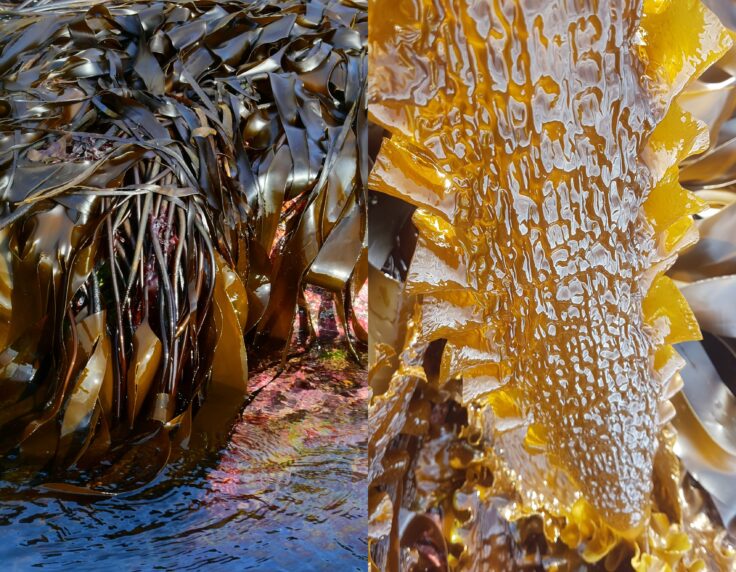
The iodine levels of kelp and sugar kelp are amongst the highest of all species of seaweed, with small quantities enough to exceed recommended intake levels
Atlantic wakame
Another species in the kelp family is Atlantic wakame, Alaria esculenta. It is also known as winged kelp and has a substantially lower iodine level (averaging around 450mg per dry kg in our review). This makes Atlantic wakame more suitable for food applications and natural iodine fortification.
Wracks
This family of seaweeds includes well-known species such as bladder wrack (Fucus vesiculosus), toothed wrack (Fucus serratus) and knotted wrack (Ascophyllum nodosum). These varieties tend to have an iodine level similar to Atlantic wakame (averaging around 500-600mg per dry kg in our review). The two wracks higher up the shore have lower iodine content, with spiral wrack (Fucus spiralis) and channelled wrack (Pelvetia canaliculata) averaging around 200mg and 250mg per dry kg, respectively.
Sea spaghetti
Sea spaghetti (Himanthalia elongata) is another brown seaweed. However, it actually has one of the lowest iodine contents of any seaweed (around 100mg per dry kg). The reason for this is unknown, but it helps to make sea spaghetti one of the best species for food applications.
Dulse
One of the most famous red seaweeds, dulse (Palmaria palmata) is comparatively low in iodine compared to most brown species. In our review of iodine content published in scientific literature, the average levels were 200mg per dry kg.
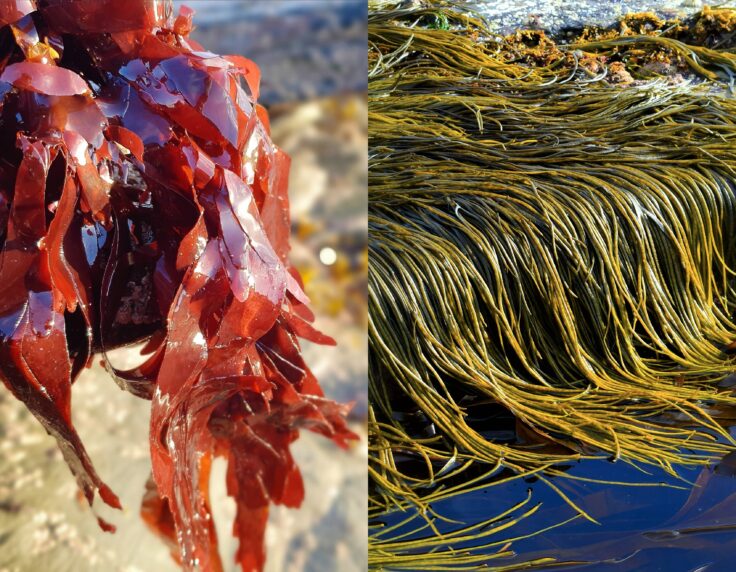
At comparatively lower content, sea spaghetti and dulse can be used in the kitchen with less risk of excessive iodine consumption
Variability in seaweed iodine levels
Unfortunately, there is considerable variation in iodine levels for each species of seaweed. The cause is unclear. Some differences have been observed by researchers regarding shore heights and parts of plant [18]. This issue came up during our initial investigation into seaweed applications over ten years ago. Anyone quoting iodine content of their seaweed will also be dealing with this natural variability. This extends to differences within a single batch: different samples taken from a species harvested on any given day will show variation in iodine levels.
Effects of processing
Seaweed can be processed to reduce iodine content. Methods can overlap with those that would be carried out anyway, including washing, blanching, freezing, drying and fermenting. Iodine loss is unfortunately inconsistent and levels may still be high after processing [18]. A lot of research has been carried out on farmed sugar kelp to find ways of lowering iodine. Of course, these treatments extend into the downstream uses of the seaweed. This could be use in a stock in the kitchen at home or incorporation into a snack bar in a factory. This means the Horizon Seaweed team advocate testing iodine content of finished products.
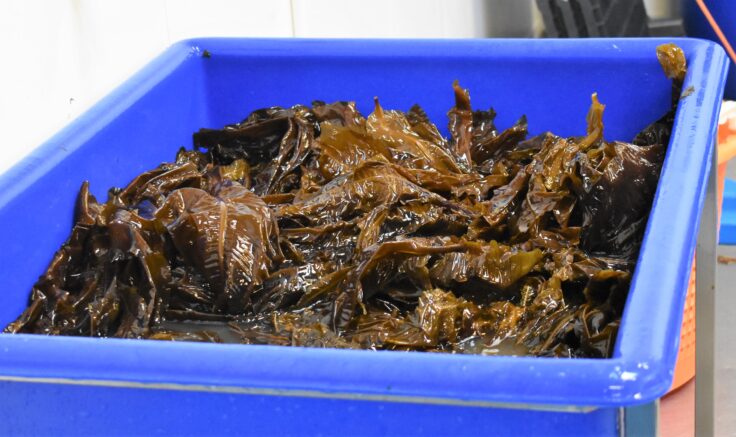
Simple processing, such as soaking in fresh water, may help reduce iodine content
Differences between analytical methods
Iodine is an awkward nutrient to analyse because it is highly volatile. There are many ways to determine iodine content, including mass spectrometry and ion chromatography. Some methods will be more likely to detect certain species of iodine (iodate, iodide, etc) and most are designed to assess the low content normally seen in food. Preparation of a seaweed sample for analysis may also affect the iodine level as this essentially further processing.
We do not include iodine in our routine batch testing as any result we get will not necessarily be meaningful for the actual product supplied to a customer. It is why we have worked with research organisations over the years. We completed comprehensive iodine testing with one university, finding that the levels in most species were lower than the averages we found in our review of the scientific literature. The difference may be connected to analytical method. Please get in touch for more information on this analysis.
Seaweed in supplements
Whist seaweed can be eaten in a vast array of culinary dishes, some people opt for seaweed supplements for convenience. These supplements come in many forms, from cellulose capsules and compressed tablets to powders and blends for smoothies and juices.
It is important to note that no two seaweed supplements are the same. This is in part due to the natural variation of iodine levels in seaweed. Iodine is very expensive to test for. As a result, some suppliers of supplements will give an average iodine level, based on historically collected data sets. There is also the challenge of knowing what species is in a supplement. The Horizon Seaweed team have seen five different species of brown seaweed used in ‘kelp’ food supplements, which is frustrating given there is such variation in iodine content between species. Worst of all, some supplements do not even declare the species. These factors contribute to healthcare professionals sometimes cautioning against the continuous use of seaweed supplements as a source of iodine.
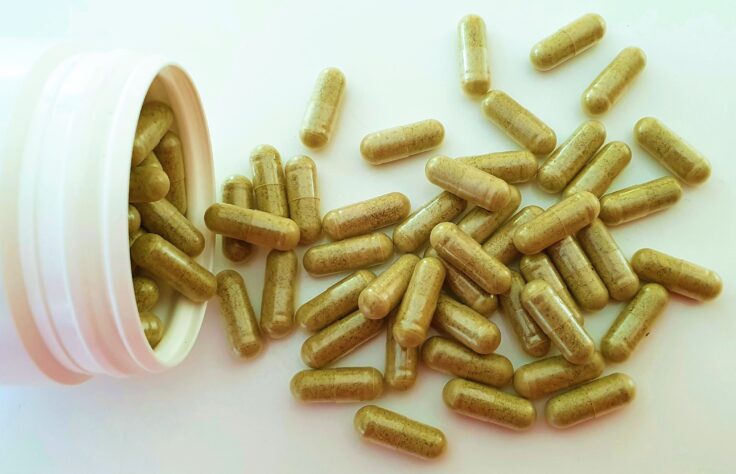
Capsules of dried seaweed are widely used as food supplements, but often contain a range of species with variable iodine content
Recommendations on using seaweed as a source of iodine
Most people will consume traces of iodine in their diet, which will probably help avoid iodine deficiency. Sadly, this may not be the case for someone on a restricted diet. Vegans are particularly at risk of not getting enough iodine. Remember that iodine content varies between species of seaweed, but all varieties are a rich source. We advise that seaweed is eaten in moderation as part of a balanced diet, up to a few portions a week. However, chose a quality supplier with good traceability to ensure what species is being used. Care should be taken for the species with the highest levels, such as sugar kelp. With regard to food supplements, blends comprising different species can be formulated to achieve lower iodine levels.
Going from low iodine intake to a sudden increase may also be an issue [19]. Negative effects of excessive iodine are usually resolved once consumption is reduced, with high iodine intake tolerated by most healthy individuals [20]. Excess iodine is usually excreted from the body with no harmful effects.
Japan is an interesting country to look at, given that seaweed is commonly consumed. It is estimated that average daily iodine intake is 1,000-3,000ug, which is distinctively higher than most other countries. Japanese people have high life expectancy and show low rates of certain types of cancer [21], although it is difficult to attribute this specifically to iodine or seaweed consumption.
Crucially, anyone with an underlying thyroid condition should be careful when incorporating seaweed into their diet and we highly recommended consultation with a healthcare professional or dietician in such cases. We advise similar caution for any women who are pregnant or breastfeeding: the iodine in seaweed is essential for healthy development, but high intake should be avoided.
References
[1] World Health Organisation, 2013a; [2] The Association of British Dieticians, 2019; [3] UK Scientific Advisory Committee on Nutrition, 2014; [4] Zimmermann, 2008; [5] Slavin, 2005; [6] Woodside & Mullen, 2020; [7] Andersson et al., 2012; [8] McNulty, 2017; [9] UK National Diet and Nutrition Survey, 2018 ; [10] World Health Organisation, 2013b; [11] Meticulous Market Research, 2022; [12] World Health Organisation, 2007; [13] European Food Safety Authority, 2022; [14] Gardner et al., 1988; [15] Paul et al., 1988; [16] Linus Pauling Institute, 2015; [17] Küpper et al., 2018; [18] Blikra et al., 2018; [19] Roti & Uberti, 2001; [20] Farebrother et al., 2019; [21] Zava & Zava, 2011.
